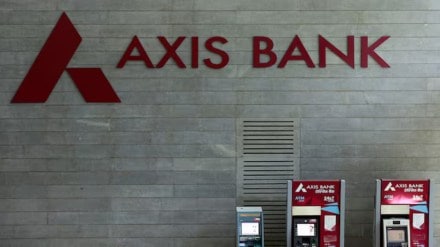Axis Bank’s share price plunged 6% intraday, hitting a fresh 52-week low of ₹974.45 on the Bombay Stock Exchange (BSE), a day after the private lender announced its third-quarter results. In response to the disappointing performance, several brokerages lowered their price targets, citing factors such as a sharp rise in slippage and credit costs, muted deposit growth, net interest margin (NIM) contraction, and lower fee income.
Among the Sensex shares, it was the second worst performer and the biggest loser in the BSE Bankex, which dropped 1,026 points or 1.8%. The stock ended 4.7 % lower in the BSE at Rs 991 per share.
Brokerage firm HSBC cut its price target on the lender to Rs 1,170 from Rs 1,350 earlier while maintaining a buy rating. Citi also cut its price target on the bank to 1,160 from Rs 1,190 earlier, while retaining its neutral rating on the stock. Nuvama Institutional Equities has cut its one-year share target price on the bank to Rs 1,220 from Rs 1,335. Emkay Global Financial cut its target price for the bank to Rs 1,300 from Rs 1,400 but retained its buy rating.
Analysts said that credit cost is now the highest among the top five banks and deposit growth the slowest.
“Gross credit cost of 86 basis points in the third quarter of current fiscal is higher quarter-on-quarter and also marginally higher than the high base of the first quarter of current fiscal, further credit cost is now amongst the highest. It is the highest among the top four banks and higher than Federal Bank and many state banks,” said Nuvama Institutional Equities in a report.
Out of the 49 analysts who have coverage on Axis Bank, 40 of them have a buy rating, while the rest have a hold rating. The bank reported a 3.83% year-on-year increase in net profit for the December quarter at Rs 6,304 crore, compared to Rs 6,071 crore in the same period a year ago. On a sequential basis, net profit dropped 9 % from Rs 6,917 crore posted in the July-September quarter.
Axis Bank’s growth in advances and deposits for the quarter was the slowest in the last 15 quarters. “A dominant part of the slippages for the third quarter emerged from the personal loans and credit cards book. Most of the sequential rise in gross slippages amounting to Rs 9.89 billion comes from seasonality pertaining to agri loan slippages,” said Shivaji Thapliyal, head of research, Yes Securities.
